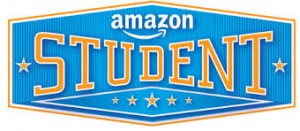Harlem by Langston Hughes
What happens to a dream deferred?
Does it dry up like a raisin in the sun?
Or fester like a sore–
And then run?
Does it stink like rotten meat?
Or crust and sugar over–
like a syrupy sweet?
Maybe it just sags
like a heavy load.
Or does it explode?
A Dream Deferred…
Pursuing a master’s degree has always been a personal and professional goal for me. I had planned and fully expected to go straight into a master’s program after completing my undergrad degree, but that didn’t happen.
I applied to a program at the University of Pittsburgh where I had completed my undgrad degree, and to my surprise, was not admitted. This was a devastating blow to my 20 something ego because up until that time, I was quite accustomed to academic success. I had done well in undergrad and been admitted to two honor societies, so I was obviously devastated. I questioned my intellect, my purpose, even myself. The rejection forced me to enter the work force prematurely and put me on a path that made me feel like Alice when she fell down that hole. And it also forced me to put my dream of an advanced degree in a box and up on a high, high shelf.
I started working at a news radio station, then went into freelancing and then did a 180 and started working for a communication company—in customer service. I had truly lost my way. No longer did I yearn for academic stimulation, intellectual conversation or the pure joy that I had once received from just learning new things. I had settled for a paycheck without purpose. This went on for far too many years. I was like a dried up raisin, festering in the hot sun.
A New Dream Still…
In 2002, I was blessed with a beautiful baby girl. She was perfect in every way and I fully committed myself to providing her with a good life, and raising her to be happy and well-adjusted child. I made sure that she attended the best schools and that she participated in engaging activities. We traveled to places like Disney and Universal Park for her birthdays and she has even been to Hawaii to dance at Pearl Harbor. I was determined to give her reasons to dream big and to pursue her dreams with vigor and determination. So far, she has had a GREAT life (not perfect), and I have been blessed to be her mom. She is now a thriving 13 year old who is kicking butt and taking names. And yes, she has big dreams. She’s a dancer and no one can tell her that she won’t make it to Broadway. But wherever life leads her, she will be well prepared and ready to walk into her destiny. And the best part about this is that she has inspired me to dream again.
A Dream Realized…
About two months ago a feeling hit me that I had misplaced something important. It was a nagging feeling that would not allow me to rest. I was feeling quite unfulfilled with my professional work and I was no longer satisfied with just seeing my daughter’s accomplishments. There was something missing from my life. Then it hit me like a bolt of lightening. It was time for me to do something for me. But what, was the question that I asked myself over and over. After a few weeks of deep thought and prayer, I remembered that dream that had been hidden away in the box in the back of that closet. Graduate school, the dream that was not yet realized.
It was now late April and every program that I researched would be starting their summer sessions in less than two weeks. How could I possibly pull that off? After many late nights and distracted days at work, I discovered the Chatham program for a Master’s in Professional Writing. I applied using my iPhone. It would take less than a week to go from pushing send to receiving a congratulatory email stating that I had been admitted. I rented a book from Amazon and can now call myself a candidate for a master’s degree. (Go, Girl! seems appropriate here) I didn’t think about how this would fit into my family’s already crazy schedule or how I could make this work with a career that can be pretty demanding. I just did it. And I feel great about that. I finally did something just for me and I am now one step closer to realizing my dream.
Living the Dream…
My story is not as unique as I would like to believe. Deferring or putting off personal plans is a far too familiar scenario for myself and 8 million other adults over the age of 25 in this country. I am certain that the bulk of that number are working parents. We want to ensure that our children are receiving the proper support and encouragement from us that we fail to do much for our own personal development or growth.
So I share this with you to encourage you and to give you a look into how it looks to live out a dream. Here are some key steps that helped me:
Steps to Living Out Your Dream
1) Acknowledge Your Dream: By acknowledging that you have an aspiration allows it takes on life. From this point it can grow and mature, and not just be a nagging thought in the back of you mind.
2) Set a Date for Achieving Your Dream: This step will hold you accountable and give you benchmarks that you have to meet. It also forces you to act, which transforms your dream into a goal, with clear objectives.
3) Develop a Plan for Pursuing Your Goal: Now, if you read my story, you have probably figured out that I sort of skipped this step. But I am developing a plan now. I know what classes I will be taken and even have an anticipated graduation date. It would, however, had made things a bit less stressful if I had done this first. I would have had greater direction.
4) Take the First Step: I applied using that tiny screen on my iPhone. This was my first step. I could have waited until I was in my office and sat down and actually fully read what I signing up for. But that would have allowed fear and doubt to set in. You have to put one foot forward if you want to walk.
5) Enjoy the Journey That Come with Living Out Your Dreams: This is the best part. Once you start this train rolling, the ride is all down hill as they say. You may get a few bumpy patches, but with determination and hard work, you will reach the end of the line and realize your dream and have nothing but road behind you.
I am in no way saying that this is an easy process. In fact, graduate classes have challenged me. I am being stretched mentally, academically, financially and spiritually. I find it difficult at times to devote time to studying and it can be quite difficult balancing my role as mother and employee with my new identity as student and professional writer. What I am saying, however, it that it is worth the effort and is, for me, turning out to be a dream come true.









 ands that is. Time stealers like housework and everyday errands will leave you frustrated and exhausted and sitting down to start homework at 9 pm is not the way to approach this investment. Take that shinny new chatham.edu for a spin at Amazon Prime for Students! Free 6 month trial and only $50 after for a year membership. Receive free 2 day shipping on practically anything you would buy at Target. You might even save money without having the browsing temptation. Free 2 day shipping and return shipping even on rental text books. Click, add to cart, get it delivered, and done.
ands that is. Time stealers like housework and everyday errands will leave you frustrated and exhausted and sitting down to start homework at 9 pm is not the way to approach this investment. Take that shinny new chatham.edu for a spin at Amazon Prime for Students! Free 6 month trial and only $50 after for a year membership. Receive free 2 day shipping on practically anything you would buy at Target. You might even save money without having the browsing temptation. Free 2 day shipping and return shipping even on rental text books. Click, add to cart, get it delivered, and done.

